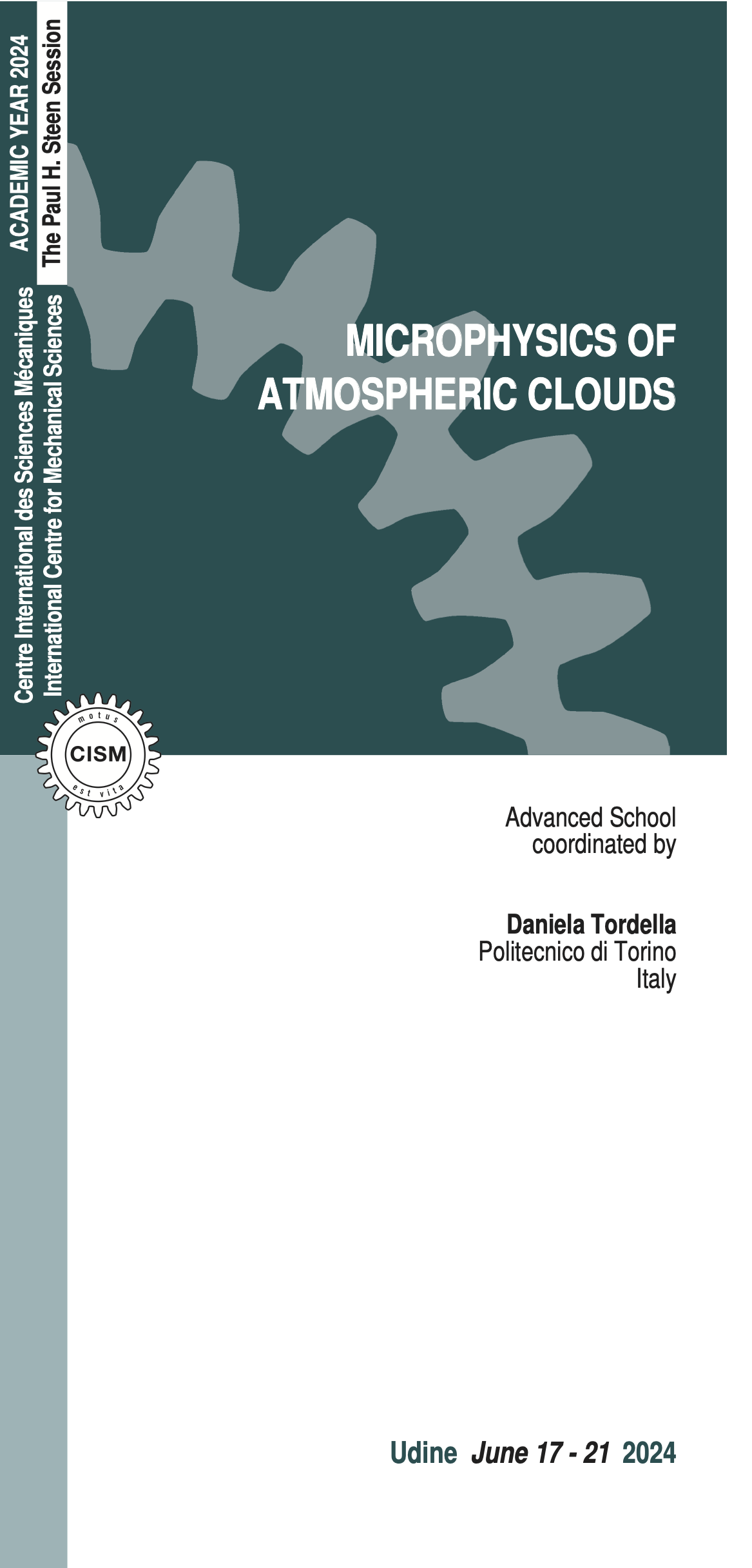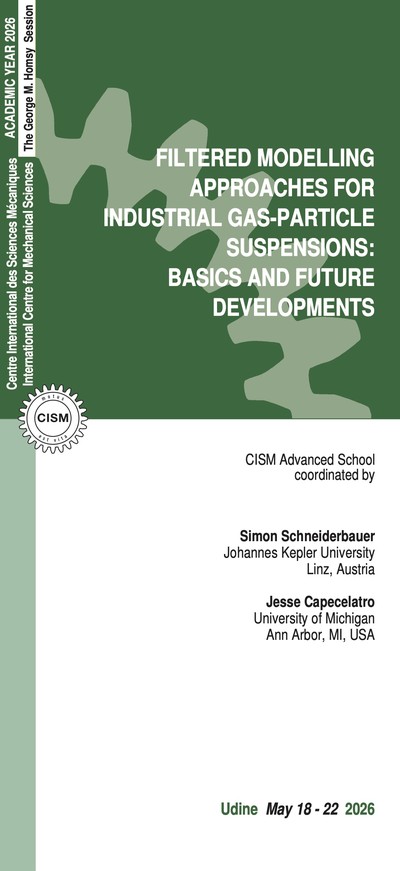Clouds determine precipitation and constitute the main component of the hydrological cycle. They can be very beautiful, but also emphemeral in the eyes of people, artists, but also of scientists, thereby creating a fascinating enigma.
The scientific study of clouds began with Luke Howard's classification in 1803. Throughout the 19th century, the boundary between the arts and sciences, particularly with regard to natural sciences, including meteorology, was much less rigid than it is today. For instance, the great German poet Goethe took particular interest in the scientific classification of clouds. The most original sea-and-sky scape painter of the 19th century, JWM Turner, annotated his copy of Goethe’s ‘Theory of Colors’, and referred to it directly in the title of one of his paintings (Light and color (Goethe’s theory)—The Morning After the Deluge—Moses writing the book of Genesis (The Tate Gallery, London)). And one the finest of all cloud painters, John Constable, was also well aware of the work of Luke Howard, and performed detailed cloud studies in the 1820s over Hampstead Heath.
It is now understood that, paradoxically, the global dynamics of the atmosphere and climate are very much dependent upon the microscale-level processes of clouds. In fact, in addition to convective heating due to the latent heat release associated with the condensation of water vapor, clouds control, to a large extent, the solar and thermal radiation balances of the atmosphere. The present course mainly focuses on a few of the fundamental aspects concerning clouds:
- Latent heat release, which leads to convective or stratiform heating/cooling, that is, one of the main energy sources of atmospheric motions at spatial scales, ranging from local turbulence and single clouds to global circulation.
- The condensation of water vapor and the subsequent precipitation within clouds through microphysical processes that take place at cloud particle size scales, ranging from several micrometers to a few centimeters.
- The effects of clouds on radiation caused by cloud coverage, the altitude of the cloud top, the size of the cloud particles, the size distributions, and the phase.
- The effects associated with atmospheric aerosols, which play a key role in determining the properties of clouds and give rise to the formation of water droplets and ice crystals.
- The development of improved observational techniques to study microphysical processes and bulk cloud properties and to measure the physical and optical properties of atmospheric aerosols.
- The interplay between the continuously increasing resolution of large-scale and mesoscale atmospheric models and the treatment of the intrinsic unsteady evolution of individual clouds.
The design of this PhD course in part stems from activities associated with the Marie Sklodowska Curie Action Innovative Training Network, COMPLETE, which was a Cloud-MicroPhysics-Turbulence-Telemetry shared inter-multidisciplinary research training environment for enhancing the understanding and modeling of atmospheric clouds. The network was financed under the Horizon 2020 Framework Program (2016-2021, GA 675675) and coordinated by Daniela Tordella, www.complete-h2020network.eu.
M K Yau, R R Rogers, A Short Course in Cloud Physics, ELSEVIER, 3rd Edition - January 1, 1989, eBook ISBN: 9780080570945.
Dennis Lamb, Johannes Verlinde, Physics and Chemistry of Clouds, Cambridge University Press, October 2011, Online ISBN: 9780511976377, DOI: https://doi.org/10.1017/CBO9780511976377.
IPCC INTERNATIONAL, the Intergovernmental Panel on Climate Change. United Nations Environment Programme (UNEP) and the World Meteorological Organization (WMO). Clouds and Aerosols, Coordinating Lead Authors: Olivier Boucher (France), David Randall (USA), 2012. https://pure.mpg.de/rest/items/item_2007900/component/file_2007948/content.
Grabowski, Wojciech W. and Wang, Lian-Ping, Growth of Cloud Droplets in a Turbulent Environment, Annual Review of Fluid Mechanics, VOL 45, 2013, 10.1146/annurev fluid-011212-140750.
Andreae MO, Rosenfeld D, Aerosol-cloud-precipitation interactions. Part 1. The nature and sources of cloud-active aerosols, Earth-Science Reviews, JUL 2008, vol. 89, issues 1-2, pages 13-, DOI 10.1016/j.earscirev.2008.03.001.
Kaufman YJ, Tanre D, Boucher O, A satellite view of aerosols in the climate system, NATURE, Sept. 12 2002, vol. 419, issue 6903, pp. 215-223, DOI 10.1038/nature 01091.
5 lectures on: Homogeneous and heterogeneous freezing processes in the atmosphere; ice crystal growth processes and secondary ice formation; the structure of mixed-phase low-level Arctic clouds; high-resolution modeling of mixed-phase low-level Arctic clouds and model evaluation.
5 lectures on: Fundamentals of cloud microphysics modeling, reviewing simple warm-rain and mixed-phase Eulerian approaches, more sophisticated Eulerian methods and particle-based Lagrangian methods; applications of various modeling approaches to study cloud microphysics and microphysics-dynamics coupling in natural and laboratory clouds; impact of turbulence on cloud droplet initiation and growth.
5 lectures on: Cloud microphysics; aerosol-cloud interactions, aerosol impact on cloud structure as a key uncertainty in the climate impact of aerosol; emulation-based approach as a tool for summarizing complex data about the sensitivities of cloud properties; Stratocumulus Clouds patterns and cooling effects by reflection of the solar radiation.
5 lectures on: The nonstationary, nonuniform, anisotropic nature of clouds; convective clouds: cumulus and stratocumulus, turbulence in the atmospheric boundary layer, then stratocumulus and finally cumulus; measurements and analysis methods, what we have learned from airborne turbulence measurements and remote sensing in clouds in the last 20 years.
5 lectures on: Analysis of cloud microphysics parametrisation uncertainty in numerical weather; Lagrangian analysis of cloud microphysics; the impact of clouds on short- to medium- range predictability (with a focus on deep convection and warm conveyor belts).
5 lectures on: Cloud-clear air interfaces: intermittency, stratification effects, water droplet population dynamics, turbulence and supersaturation fluctuations and relevant temporal micro-scales, innovative mini radiosondes for Lagrangian measurement of temperature, pressure, humidity fluctuations inside clouds.
5 lectures on: Cloud and precipitation micro-macrophysics in numerical weather prediction and climate models (2 lectures), Evaluation of simulated cloud and precipitation processes using ground-based remote sensing, Satellite and aircraft observations, Cloud feedbacks in the climate system and their relation to simulated climate sensitivity, Role of microphysics in extreme convection simulations, numerical weather prediction and climate
ADMISSION AND ACCOMMODATION
The course is offered in a hybrid format, allowing participants the flexibility to attend either in person or remotely via the Microsoft Teams platform.
Limited spots are available for on-site attendance and will be allocated on a first-come, first-served basis.
The registration fees are:
- On-site participation: 600.00 Euro + VAT*
Includes a complimentary bag, five fixed menu buffet lunches, hot beverages, downloadable lecture notes.
Deadline for on-site application is May 17, 2024.
- Live Streaming Online Participation: 250.00 Euro + VAT*
Includes downloadable lecture notes.
Deadline for online application is June 6, 2024.
Application forms should be submitted online through the website: http://www.cism.it.
A confirmation message will be sent to accepted participants.
Upon request, a limited number of on-site participants can be accommodated at CISM Guest House at the price of 35 Euro per person/night (contact: foresteria@cism.it)
* where applicable (bank charges are not included) - Italian VAT is 22%.
CANCELLATION POLICY
Applicants may cancel their registration and receive a full refund by notifying the CISM Secretariat in writing (via email) no later than:
- May 17, 2024 for on-site participants (no refunds after the deadline);
- June 6, 2024 for online participants (no refunds after the deadline).
Cancellation requests received before these deadlines will be subject to a 50.00 Euro handling fee. Incorrect payments are also subject to a 50.00 Euro handling fee.
GRANTS
A limited number of participants from universities and research centres who do not receive support from their own institutions can request a waiver of the registration fee and/or free lodging.
Requests should be sent to the CISM Secretariat by April 17, 2024, along with the applicant's curriculum vitae and a letter of recommendation from the head of the department or a supervisor confirming that the institute cannot provide funding. Preference will be given to applicants from countries that sponsor CISM.





